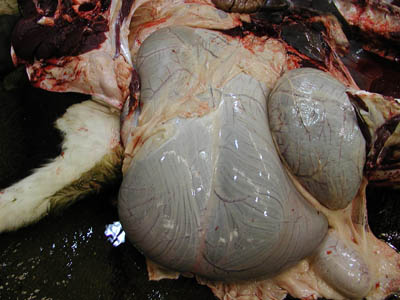 |
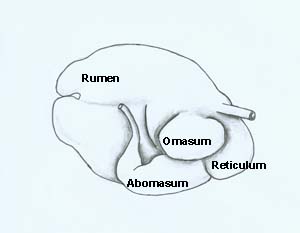 |
Now focus on the forestomach of the cow. Find where the intestine connects to the forestomach. This part of the intestine is called the duodenum and is attached to the abomasum. |
 |
Cut the duodenum away from the rest of the intestines and make a lengthwise incision through the duodenum and abomasum. Examine the lumens (inner surface) of both organs. The abomasum is considered the true stomach, as it secretes gastric acids for the break down of food. For this reason, it has a smooth surface and usually liquid contents. |
|
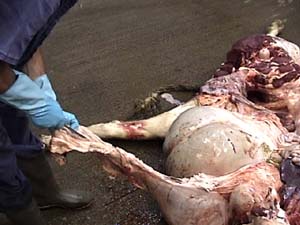 |
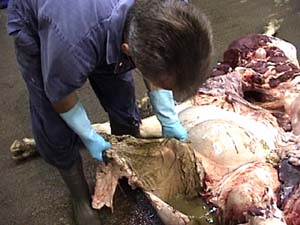 |
| The omasum is the next compartment of the forestomach. This organ should feel rather firm and contain "leaves" like a book. These are used to grind up food particles passed from the rumen. | 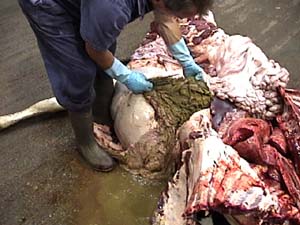 |
 |
The reticulum is the next compartment. This is a smaller sac that has a honey comb appearance on the inside. This will usually contain the magnet if they are used on your operation. |
| The largest compartment is the rumen. Its inner surface is a lot like a shag carpet, made up of thousands of papillae. These papillae should not slough off when you run your knife across them, unless the animal has been dead for more than an hour. If many of the papillae slough off and the animal has not been dead more than an hour, you may consider sampling the rumen contents for signs of a pH change, as in grain overload or other gastrointestinal upset. | |
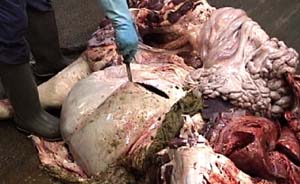 |
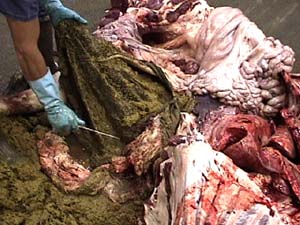 |
| Examine all compartments and make note of the appearance of the tissue as well as the contents. | |

